Paradise City
Marblequarries
Driving south over the A12 from Genova to Livorno in Italy, along the westside of the Apennines, the area around Carrara from a distance looks as if we see perpetual snow. However, those who know the area, know better. It is not snow we are seeing, but negligent downhill dumping of debris from the marblequarries.
points of sale
for Paradise City
PRINT A
limited_edition
PRINT B
limited_edition
PRINT C
limited_edition.
close
this window
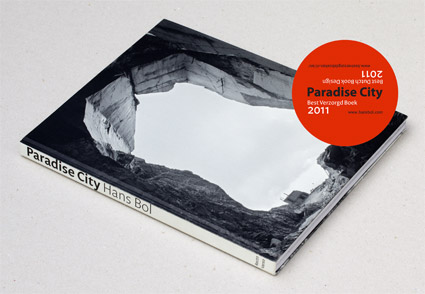
It is an eccentric landscape that has a special mix of romanticism, large-scale and first-rate production techniques and massive economic interests. By visiting the area for over a period of more than twenty years, Hans Bol has been able to investigate the quarries from different angles, all organically related with each other. First, he was struck by the fantastic light in the quarries; then he was fascinated by the material itself and the traces the work process left behind. As a result he started to see the quarry as one, big sculpture, in which coincedence played a major role - the work process in the quarry itself led to interesting shapes and structures that were condensed into abstract sculptures through the lens. Finally, also influenced by the work of The New Topographics, he saw and recorded the immense damage done to nature in this impressive western part of the central Apeninnes. Aloof beauty seemed to have to go hand in hand with cruel attacks on the landscape. Thus, a new, other landscape has come into being that may be read as a methaphor for human interaction with nature.
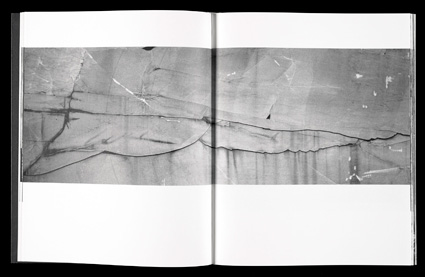
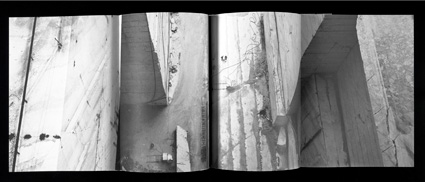
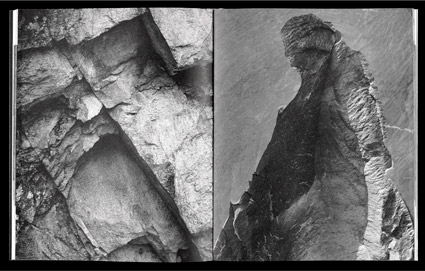
Some clickable examples from the book
 |
 |
|
 |
 |
|
 |
 |
 |
 |
|
 |
|
|
 |
 |
|
 |
|
 |
 |
Northern tradition
In his essay "Alpi Apuane" that Flip Bool wrote for this book he says the following about the photographs that the photographer made in the quarries:
"Yet, in my view Hans Bol is also part of the pre-photographic tradition, which was described in 1973 by Robert Rosenblum in connection with painting as the 'northern Romantic tradition', and in 1984, more or less as a follow-up, called 'the mystic North' by Roald Nasgaard. What is key in their view is that modern (pictorial) art has a longer history than often presumed and a typical northern tradition dating back to the Romantic painter Casper David Friedrich. This northern tradition is characterized by impressive landscapes in which the fragility of man is portrayed opposite the overwhelming macro cosmos. Man may view himself as the centre of the universe and strive for complete control of it. But eventually nature reigns supremely. Paradise City also unsentimentally communicates this feeling, especially the frontispiece. From a manmade cave we see the mountainous and seemingly idyllic area where marble quarries have left their mark. It cannot be a coincidence that looking through a hole at nature is a central theme within the not so well-known paintings by the Swedish playwright August Strindberg, who experimented with photography himself around 1900."
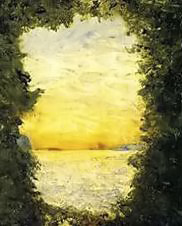
August Strindberg 1849-1912
(zource: Google)
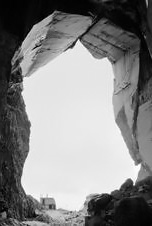
Hans Bol
(Monte Altissimo 1990)
Photography
The photographs in the book Paradise City have been made with various camera systems and are part of a larger body of work of about 300 images. The work has been made using 4x5 inch- , 4x10 inch-, 8x10 inch-, 8x20 inch- and 6x17 cm-cameras. By working in this way Hans Bol shows his affinity with photographers like Robert Adams, Josef Koudelka, Art Sinsabaugh, Aaron Siskind en Michael A. Smith.
Book Design
Paradise City is a vertical of 24x30 cm.
It contains 84 black and white photographs, of which 4 are fold-outs that measure 96cm in width. Also, each book contains one small, handmade baryta print. The book has been printed in tritone by ANDO in The Hague. The design was done by Els Kerremans / Buro Typography Interiority & Other Serious Matters (www.typography.nl/) in The Hague, The Netherlands.
Editions
Paradise City has been published by Recto Verso. The total edition of 700 copies consists of 640 regular copies and 60 Limited Editions (signed/numbered book in cardboard cover + signed/numbered gelatin silver print). For the Limited Edition one can choose from three different images, limited to 20 gelatin silver prints per image:
PRINT A / PRINT B / PRINT C - as shown below

Print A |

Print B |

Print C |
| Order online | ||